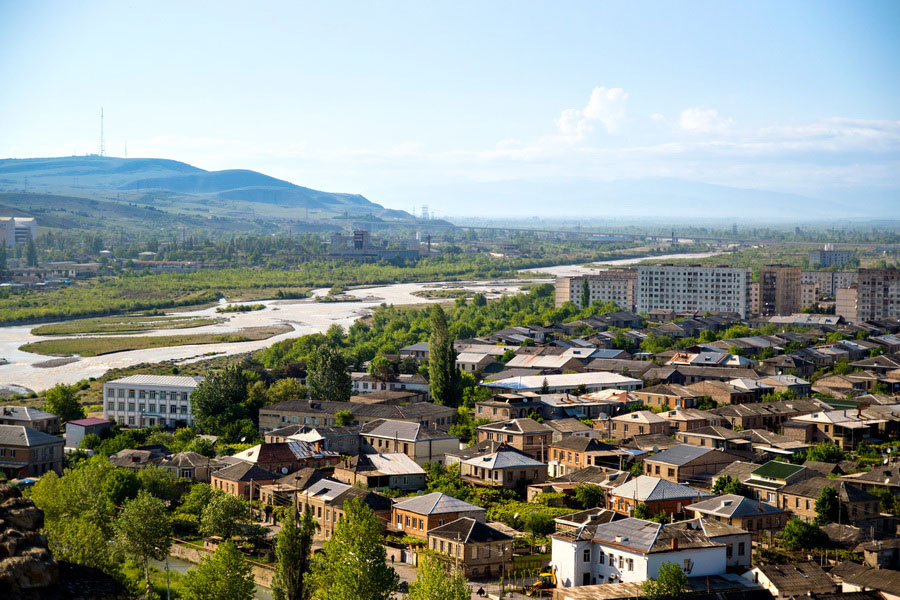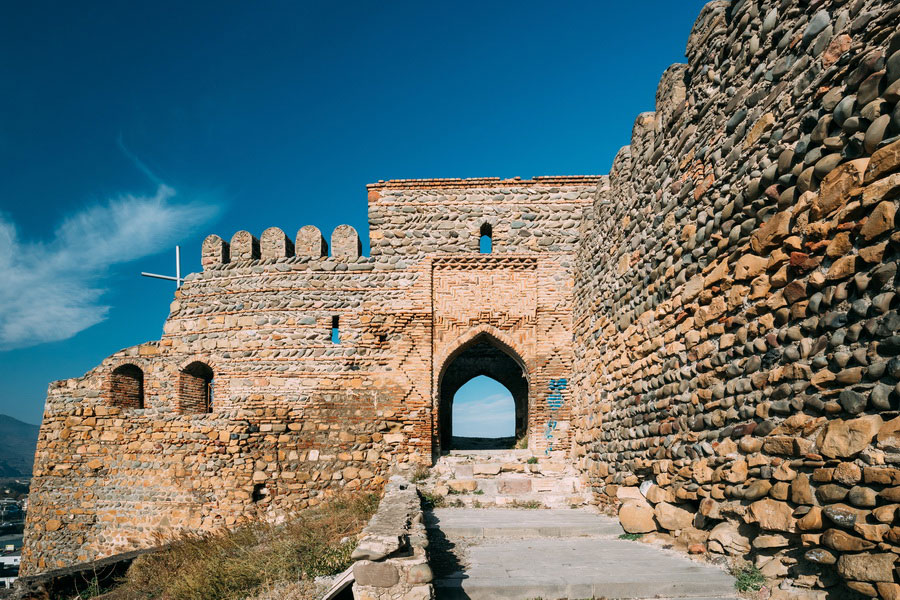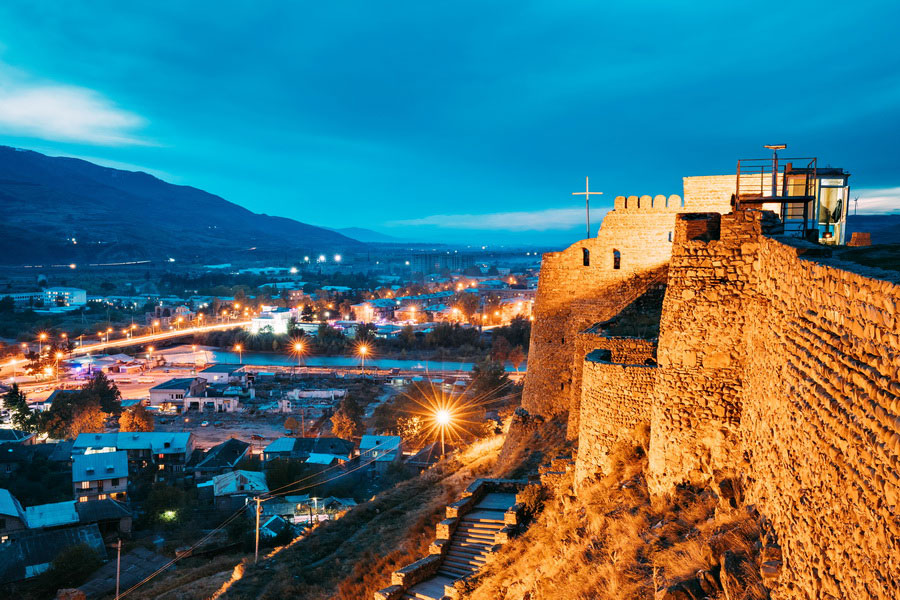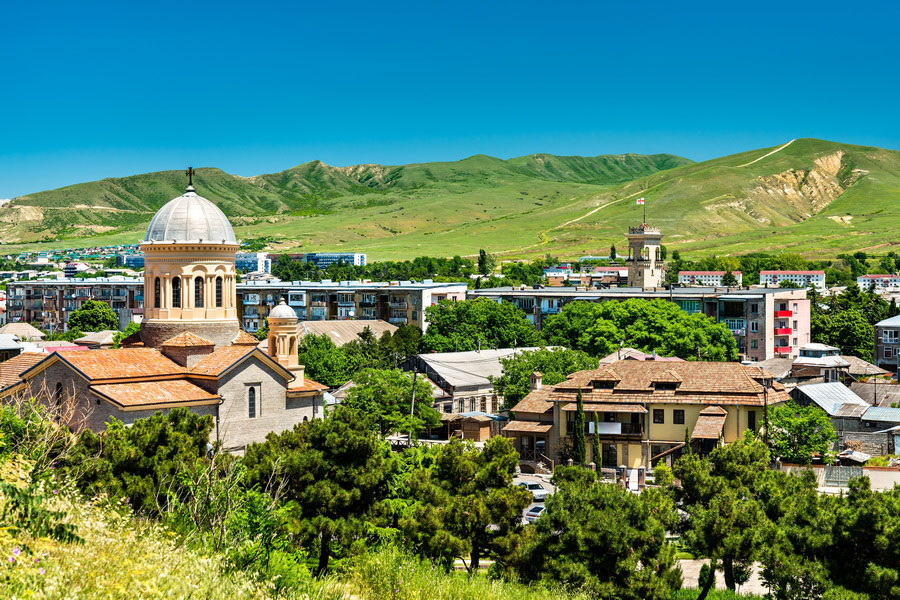Things to Do and Sightseeing Tours in Gori
Nestled in Georgia, Gori stands as one of its most ancient cities, established in the 12th century by the visionary King David IV the Builder. The city's highlights include age-old fortresses perched on towering hills, museums brimming with historical artifacts, and contemporary art galleries showcasing unique pieces. Gori is the perfect destination for those seeking a peaceful retreat amidst stunning landscapes and fresh air.
Just a 90-minute drive from Georgia's capital, Gori is often paired with trips to the historic cave settlement of Uplistsikhe, offering a serene escape from Tbilisi's hustle and exploring the charm of a quaint provincial town. For those seeking intriguing sites near Tbilisi, Gori promises a memorable day out.
What Gori is Known For

Many recognize Gori as the birthplace of Joseph Stalin, born into modest circumstances in a rented room within a humble house. By the late 19th century, Gori resembled a small village of simple, uniform houses, among which Stalin's family resided.
A museum in Gori delves into Stalin's life and career, drawing global visitors. Here, one can explore Stalin's preserved office and view personal belongings from the Soviet era.
Less known to first-time visitors is the ancient Goris-Tsikhe fortress, a significant Shida-Kartli citadel dating back to the 5th-4th centuries BC, offering panoramic views of Gori and its valley.
A trip to Gori often includes a visit to Uplistsikhe, an ancient rock-hewn city featuring a maze of dwellings, workshops, and temples. A guided tour enriches the experience, ensuring a deep appreciation of this historical site.
Gori, free from the usual commotion and crowds, invites leisurely exploration of its streets, architecture, and green spaces. The city also boasts excellent cafes and restaurants known for delicious cuisine and hospitality.
Brief History of Gori

Gori, the central city of the Shida-Kartli region, has been a pivotal part of the ancient Georgian kingdom of Iberia's development over centuries. Its origins are shrouded in mystery, with the earliest written mention in the 12th century, though artifacts indicate habitation as far back as the 5th-4th centuries BC.
Throughout its history, Gori has seen invasions by Ossetians, Persians, Turks, and Alans. In the 17th century, it succumbed to Iranian Shah Abbas, who stationed his garrison in the Goris-Tsikhe fortress, marking the beginning of a broader Georgian conquest. It took 130 years for Gori to regain its freedom.
Strategically located on a rocky cliff at the confluence of the Big Liakhvi and Kura rivers, the Goris-Tsikhe fortress was crucial for defense, allowing for early detection of approaching enemies. The city also faced significant destruction from natural disasters, including a devastating earthquake in 1920 that damaged the fortress and resulted in numerous fatalities.
The 19th century saw an influx of Jewish, Armenian, Ossetian, and Russian settlers, whose descendants still reside in Gori.
Gori Attractions

Despite its modest size, Gori is rich in attractions that showcase Georgian life and culture.
The Joseph Stalin Museum, the city's most notable landmark, draws visitors with its extensive collection of Stalin-era artifacts, including personal belongings and office furniture, housed in a building reflective of the "Stalin Empire" style.
The museum, established in 1937, is located in the small house where Stalin was born and raised, preserved to offer insight into his humble beginnings. The main building features items from Stalin's life, and an armored train car he used for travel, highlighting his aversion to flying.
The Goris-Tsikhe fortress is another highlight, offering stunning views of the surrounding landscapes. Its current form dates back to the 17th-18th centuries, despite being rebuilt several times. Free to the public, it's an ideal spot for witnessing Gori's scenic beauty at dawn or dusk.
At the base of Gori's main citadel, there's a unique monument dedicated to Georgian soldiers. This sculpture features eight large figures of soldiers seated in a circle, each missing a body part, representing the irreplaceable losses brought by wars and bloody battles. The monument is both daunting and striking in appearance.
For those keen to delve into Georgia's history, the Ethnographic Museum of Gori opens its doors five days a week. It's a treasure trove for anyone fascinated by antiquity and mysterious artifacts from hundreds and thousands of years ago. Inside, visitors can explore a collection of oddly shaped musical instruments, vibrantly embroidered national costumes, intricately carved wooden furniture, household items, dishes, jewelry, weapons, and a vast array of minted coins. Additionally, there's a special section for ancient manuscripts and first-printed books, alongside a significant numismatic collection. The museum's courtyard often hosts art and photo exhibitions featuring the works of Georgian and international artists.
Gori is also home to the Art House Gallery, a vibrant center for exhibitions, workshops, seminars, lectures, concerts, and meetups with musicians, artists, writers, and other creative professionals. The gallery showcases works that reinterpret Georgia's historical legacy through modern perspectives, with each exhibition centered around a cohesive theme that often blends various elements, ideas, and concepts in harmony. Housed in a unique Soviet-era building designed in the constructivist style, the gallery is a must-visit.
To truly experience Gori's vibrancy, head to the local food market. It epitomizes the essence of Georgian provincial markets, with stalls of fruits, vegetables, spices, coffee, and more. You'll find cheeses, meats, seafood, nuts, honey, and the iconic churchkhela. Engaging with the vendors, inquiring about unfamiliar products, and sampling different items is encouraged. Market traders are always open to a good chat with visitors.
Stroll down Tsereteli Street to witness the transformation of an old historical quarter from a neglected state into a charming area. With carefully laid cobblestones, well-maintained brick houses, tiled roofs, and modern streetlights, the street has become a cozy spot for leisurely walks and photography.
Gori's attractions leave a lasting impression, shaping the city's character and ensuring memorable experiences.
Vicinities
Near Gori, you'll find the serene Church of St. George, reachable within a mere 10 minutes from the city center. This ancient temple, nestled atop a hill within an 8th-century citadel, offers breathtaking views of the surrounding village of Didi Gorijvari and the vast mountain landscapes, free from the hustle and bustle of tourist crowds.
Uplistsikhe, an ancient pagan city carved into the rocks, stands as one of the most remarkable sites near Gori. Esteemed as the oldest settlement in the ancient Georgian state, Uplistsikhe thrived in the 1st millennium BC, originally comprising 700 caves used for various purposes, though only 150 remain today. These caves, once serving as shops, taverns, dwellings, wine-making and storage rooms, and even an apothecary, leave a lasting impression on visitors. Uplistsikhe has been thoughtfully restored and is open for daily visits, equipped with modern amenities like parking, benches, and walkways.
Another notable site near Gori is Ateni Sioni, a 7th-century temple whose origins remain a mystery, though it's speculated to have been designed by the architect Todosak, also credited with the creation of the Jvari temple, a masterpiece of early medieval Georgian architecture.
The temple's most significant and treasured aspect lies in its frescoes, dating back to the 11th century. Despite partial preservation, substantial fragments have survived, offering us a glimpse into the temple artistry of 1080.
Restaurants of Gori
Gori's culinary scene is vibrant, with cafes and restaurants eager to satisfy patrons with a plethora of delectable dishes. Below are highlights of the city's most beloved eateries.
Chinebuli Restaurant offers an expansive menu at affordable prices, situated near the city's heart, close to the Stalin Museum. This makes it an ideal spot for a fulfilling meal following a museum tour. Diners frequently commend its kharcho soup, khinkals, Adjara-style khachapuri, and succulent beef chebureks.
KE&RA stands out as a family-run restaurant, where hospitality extends beyond mere service. The owner personally greets guests, guiding them to their tables and sharing insights into Georgian culinary and dining traditions. The restaurant prides itself on offering homemade churchkhela, wine, compotes, and chacha. Nestled in a standalone house surrounded by a lush garden, guests have the option to dine in the serene outdoor setting.
How to Get to Gori?
Reaching Gori is straightforward, with options like taxi, rental car, shuttle bus, or train, each taking around an hour and a half. Shuttle buses to Gori depart daily from Tbilisi's Didube bus station. Electric trains to Gori run towards destinations like Zugdidi, Kutaisi, Poti, Borjomi, and Ozurgeti.
For a seamless experience, consider joining a group or individual tour to Gori. Advantour offers exciting excursions to Georgia's top attractions, ensuring a vibrant and educational journey in the comfort of a modern vehicle.


